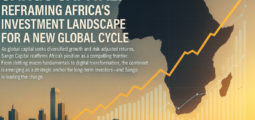Otaviano Canuto on Aging and the Immigration Conundrum: A Demographic Dilemma
Across the globe, populations are aging as declining fertility rates and increased longevity reshape demographic landscapes. While longer life expectancy is a testament to medical and public health advancements, the persistent decline in birth rates presents an economic challenge of immense proportions. Age pyramids are shrinking at the base while expanding at the top, a shift that raises pressing questions about the future of economic growth, productivity, and social stability.

Structural factors largely explain falling birth rates. Urbanisation, rising educational attainment, and increasing female participation in the labour market have led to a shift in societal norms, with many opting for smaller families. The economic burden of childrearing, coupled with the perception that fewer children enable a better quality of life, has reinforced this trend. Notably, no country has successfully reversed the decline once it has passed below the replacement threshold, despite various governmental incentives aimed at boosting fertility.
Demographic Tipping Points
Countries experiencing declining fertility rates inevitably reach a demographic tipping point where the population begins to shrink. In a recent study, “Demographic Dynamics and Immigration Policies in High-Income Countries”, Eduardo Andrade and I analysed how different nations are approaching this threshold at varying speeds.
We identified three broad categories of countries:
High-fertility nations: This group includes 52 countries—41 in Africa, ten in Asia, and Papua New Guinea in Oceania—where the fertility rate remains above 2.9 children per woman. Barring unexpected shifts, these populations will continue to expand until the end of the century.
Declining-population countries: Ninety-four countries fall into this category, spanning all continents and income groups. Some, such as Italy and Japan, are already experiencing population contraction, while others are expected to follow within this century. Sixty-four of these nations already have fertility rates below the replacement level of 2.1, and the remaining are on a clear trajectory towards it.
Immigration-mitigated countries: Fourteen high-income nations—including the United States, Canada, and Australia—have thus far managed to offset declining birth rates through immigration. In all but one (the Czech Republic), foreigners make up at least 10% of the population. While deaths will eventually outnumber births in these countries, their overall populations may continue to grow—provided they remain attractive destinations for migrants.
The Economic Challenges of Aging
Aging societies face two principal economic hurdles. The first is what we have termed the “geriatric fiscal trap.” In most developed economies, social security systems operate on a pay-as-you-go model, with current workers funding benefits for retirees. As the working-age population shrinks and the elderly population grows, pension expenditure will outpace contributions, creating fiscal strain. Health care spending also rises in aging societies, further exacerbating budgetary pressures.
In response, governments will be compelled to raise taxes or adjust benefits, but higher taxation could suppress economic activity, reducing disposable income and discouraging larger families—thus further shrinking the future tax base. Raising the retirement age is an obvious solution, yet politically fraught, given that older voters constitute a powerful electoral bloc.
The second challenge is declining productivity. With a shrinking workforce, economic output is at risk unless labour participation rises or automation compensates for the shortfall. Innovation could also suffer; history suggests that scientific and entrepreneurial breakthroughs are disproportionately driven by individuals under 50. If aging societies fail to cultivate creativity in older populations, they may struggle to maintain the pace of technological and economic progress.
Some optimists argue that artificial intelligence and automation will offset the impact of a shrinking workforce, boosting productivity even as populations age. However, while technology may alleviate some pressures, it cannot fully replace the economic dynamism that comes from younger, active workforces.
Immigration as a Partial Solution
For now, immigration remains the most effective mechanism to counteract demographic decline. Our research highlights how immigration has contributed to economic growth in high-income countries by replenishing the workforce, stimulating demand, and alleviating the fiscal burden of aging populations.
The United States offers a compelling case study. Foreign-born workers in the U.S. tend to have higher average levels of education than their native-born counterparts, a factor that has undoubtedly contributed to a “brain drain” in many of their home countries. Moreover, the post-pandemic economic recovery in the U.S. would have been far slower without increased immigration, which bolstered labour supply at a critical moment.
The Immigration Conundrum
Yet, despite its economic benefits, immigration faces mounting resistance in many high-income countries. Anti-immigrant sentiment has been a decisive force in elections across Europe and North America, with populist movements leveraging fears of cultural displacement and economic insecurity to rally support. This backlash has complicated policymaking, with governments struggling to reconcile economic necessity with political reality.
Interestingly, opposition to immigration is not uniform. In some cases, resistance is selective. For example, within the U.S., divisions exist among conservative policymakers, with some advocating for a total halt to immigration while others favour policies that prioritise highly educated migrants. Similar patterns are evident in Europe, where certain governments have embraced skilled migration while simultaneously imposing strict controls on low-skilled labour inflows and refugee admissions.
The Future: Immigration vs. Demographic Decline
As demographic imbalances persist, the global migration landscape is likely to become even more complex. Climate change will add another layer to the equation, exacerbating economic and social pressures in already vulnerable regions, thereby increasing migration flows. At the same time, wealthier nations will face growing economic incentives to attract skilled foreign workers, setting up a tension between economic imperatives and political constraints.
If history is any guide, economic logic alone is unlikely to override nationalist impulses. However, as labor shortages intensify and pension systems come under strain, the need for pragmatic immigration policies will become harder to ignore. The question is not whether immigration can help address aging-related economic challenges—it already does. The real question is whether societies are willing to accept it as part of a long-term solution.
The demographic challenges facing the world are profound, and there is no one-size-fits-all answer. Immigration is not a panacea, but for countries on the frontlines of demographic decline, it remains the most viable tool to mitigate economic stagnation and fiscal distress. Whether governments can implement policies that strike the right balance between economic necessity and political feasibility will determine how the next chapter of global demographic shifts unfolds. i
Based on Canuto, O. and Andrade, E., “The Rich World’s Immigration Conundrum”, Project Syndicate, July 30, 2024, and “Demographic Dynamics and Immigration Policies in High-Income Countries”, Policy Center for the New South, 3 April 2024.
About the author
Otaviano Canuto, based in Washington, D.C, is a former vice president and a former executive director at the World Bank, a former executive director at the International Monetary Fund, and a former vice president at the Inter-American Development Bank. He is also a former deputy minister for international affairs at Brazil’s Ministry of Finance and a former professor of economics at the University of São Paulo and the University of Campinas, Brazil. Currently, he is a senior fellow at the Policy Center for the New South, a professorial lecturer of international affairs at the Elliott School of International Affairs – George Washington University, a nonresident senior fellow at Brookings Institution, a professor affiliate at UM6P, and principal at Center for Macroeconomics and Development. Otaviano has been a regular columnist for CFI.co for the past 13 years. X: @ocanuto
You may have an interest in also reading…
Paul Krugman: A Plea for a Return to Basics in Finance
Author of no less than twenty books, over 200 scholarly essays in peer-reviewed academic journals and more than 750 articles
OPIC: Low Write-Offs in Emerging Markets Investments
What organization do you represent? Overseas Private Investment Corporation, the U.S. Government’s development finance institution. In your experience or view,
Ann Low, US Department of State: Good Corporate Governance is Good Business
OECD Guidelines on Corporate Governance of State-Owned Enterprises. Over the past decade, cross-border trade and investment by state-owned enterprises (SOEs)



















































































